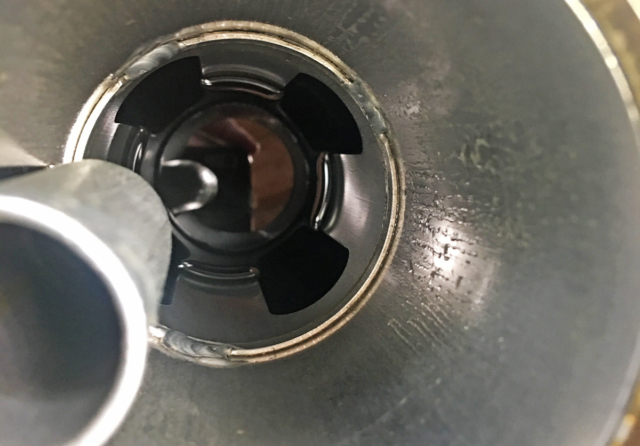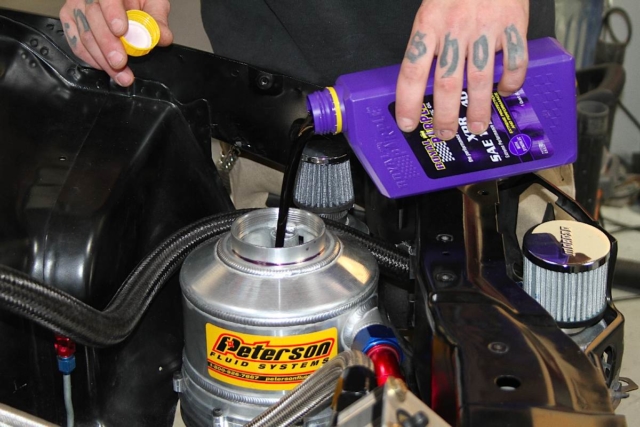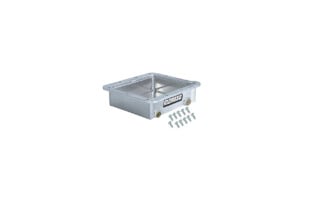Dry sump oiling systems naturally bring about a lot of technical questions from racers new to such systems, and while that’s not a direct reflection of them being overly complex, they’re certainly a different ballgame from the wet sump systems that most automotive enthusiasts and grassroots racers are accustomed to. For Peterson Fluid Systems, one of the leaders in high performance oiling systems, one of the most common questions that they field calls for — they estimate as many as 20 a week — regarding their dry sump systems is “how full do I fill my oil tank and how do I check it?”
According to the staff at Peterson, the first determination to be made in this is the capacity of your oil tank (the large external reservoir). Peterson recommends filling the oil tank to roughly 70-80 percent capacity, so that means in a three gallon system, for example, you’d pour in about 2.5 gallons and then fire the motor up to allow it to cycle through the pump and into the motor.
 Once the motor has warmed up, you’ll want to remove the cap on top of the oil tank and look down the center tube of the tank. Here, you can determine the oil level, which should be about a third to two-thirds of the way up the center tube when the engine is operating at 3,000 rpm. Peterson’s tanks come with a perforated screen located in the center tube that’s intended to keep the user from accidentally dropping foreigns objects down into the tank — you can use this screen to assist as an indicator, as the oil level should ultimately end up about one to three inches below that screen when the engine is running.
Once the motor has warmed up, you’ll want to remove the cap on top of the oil tank and look down the center tube of the tank. Here, you can determine the oil level, which should be about a third to two-thirds of the way up the center tube when the engine is operating at 3,000 rpm. Peterson’s tanks come with a perforated screen located in the center tube that’s intended to keep the user from accidentally dropping foreigns objects down into the tank — you can use this screen to assist as an indicator, as the oil level should ultimately end up about one to three inches below that screen when the engine is running.
If you’re looking for an alternate way to check your oil tank, Peterson does offer external dipsticks for their full line of oil tanks, and they also point out that a wooden dowel or even a piece of welding rod can be used if you’ve got to check your oil level and don’t have anything else more specific on-hand. Another cheap trick to help determine oil level is to use a tape measure fed down through the cap to measure the level with each quart of oil added. You can then quickly use this measurement in a pinch to know precisely how much additional oil you need.
So, shoot for about two-thirds of the way full for your given oil tank capacity, but definitely keep an eye on your breather, because if you’re getting oil blow-by, then chances are you’ve over-filled the tank and need to lower the oil level.


















